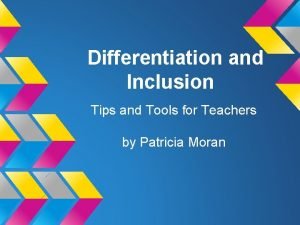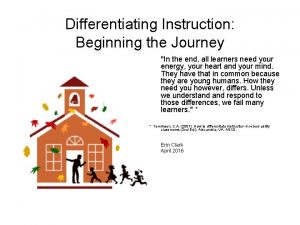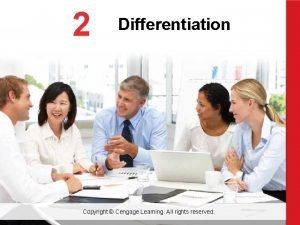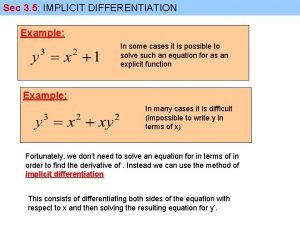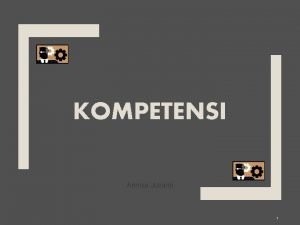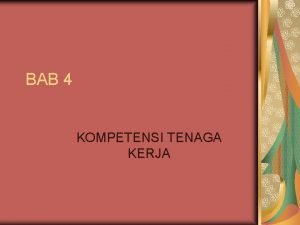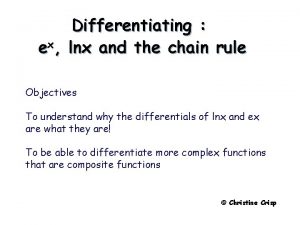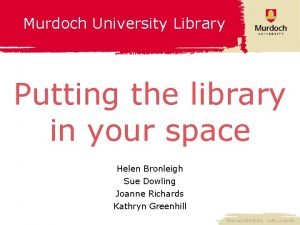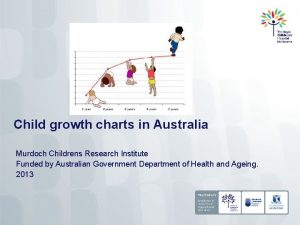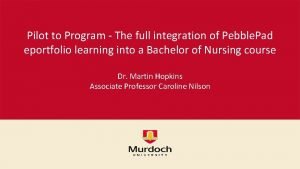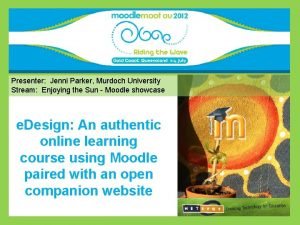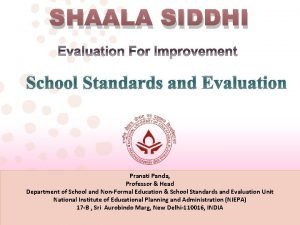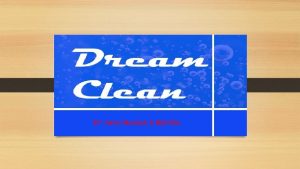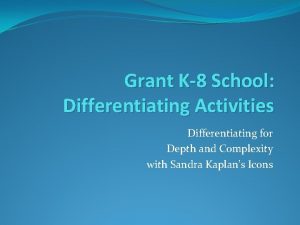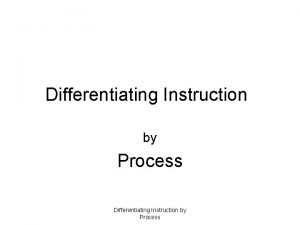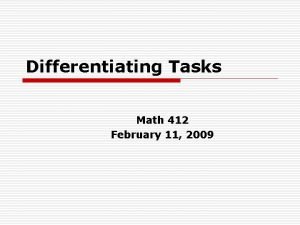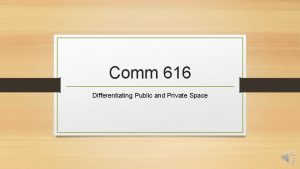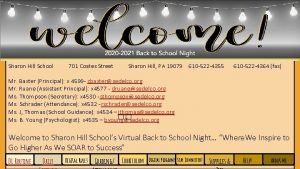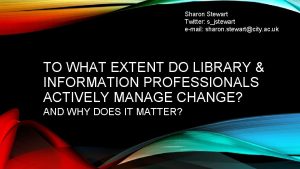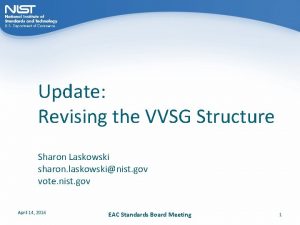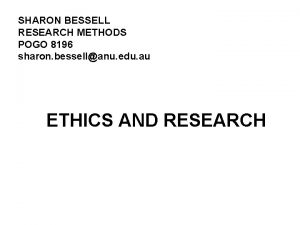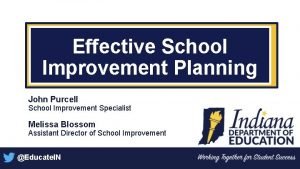School Improvement Differentiating with Technology SHARON MURDOCH Our


















- Slides: 18

School Improvement: Differentiating with Technology SHARON MURDOCH

Our SIP’s desired outcome: � 95% of students will be proficient or higher on MSA �No more than a 10% variance among subgroups From “Sudlersville Middle School 2011 -2012 School Improvement Plan”

2012 Maryland School Assessment Data 100 90 88. 8 75 80 70 60 92. 1 79. 4 82. 4 81. 3 White 61. 5 58. 3 African American 58. 3 50 40 • Data unavailable for African Americans in Grade 6 30. 8 30 • 2011 Data for Science 20 10 0 Math, 7 Reading, 7 Math, 8 Reading, 8 Science, 8 From “Maryland Report Card”

2012 Maryland School Assessment Data 100 93 92. 1 90 88. 9 84 80. 6 80 80 70 66. 7 78. 4 69. 9 66. 7 64. 7 Aggregate 60 53. 3 47. 1 50 Special Ed 41. 2 40 30 20 10 0 Math 6 Reading 6 Math 7 Reading 7 Math 8 Reading 8 Science 8 From “Maryland Report Card”

Grade 6, Queen Anne’s County Q 4 Benchmarks 80 71 70 60 50 71 69 70 64 55 52 57 63 55 45 45 40 30 20 White African American Aggregate Special Ed 10 0 Math Reading Science From “Performance Matters”

Technology can be used to differentiate: �Content – what the student learns �Process – how the student learns it �Product – how the student demonstrates learning

Committees �Health & Wellness �Special Education �Gifted & Talented �Minority Achievement �PBIS �Technology?

Resources + Interactive Projector in each classroom + 4 student computers in each classroom + technology lab + mobile laptops - support personnel Technology offers solutions!


Not “One Size Fits All” �Teachers of different subjects and various teaching styles �Students with diverse learning styles, strengths, and needs �Teachers are given a choice of technology tools

Triptico for pre-assessment From http: //www. triptico. uk/


From www. wikispaces. com

From “The CBAM: A Model of the People Development Process”

Follow-up and support �One-on-one coaching �Small group practice

How well is it working? �Ongoing feedback �Lesson plans that use technology to differentiate �Participation in wiki �Year-end reflection and report

“Technology serves as a bridge to more engaging, relevant, meaningful, and personalized learning, all of which can lead to higher academic achievement. ” - North Central Regional Educational Laboratory (NCREL) As cited in “Differentiating Instruction with Technology in K-5 Classrooms”

References Maryland Report Card. (2012). Retrieved from http: //mdreportcard. org/ Performance Matters. (2012). Retrieved from https: //adms 3. performancematters. com/appcore/redwood/main. cfm Smith, G. E. and Throne, S. (2007). Differentiating instruction with technology in K-5 classrooms. Retrieved from http: //www. iste. org/images/excerpts/DIFFK 5 -excerpt. pdf Sudlersville Middle School, School Improvement Team. (2011). 2011 -2012 School Improvement Plan. Centreville, MD: Queen Anne’s County Board of Education. Sweeny, Barry. (2003). The CBAM: A Model of the People Development Process. Retrieved from http: //www. teachermentors. com/CBAM. php
 Evolusi hubungan coming together stages
Evolusi hubungan coming together stages Differentiating process examples
Differentiating process examples Differentiating process examples
Differentiating process examples Differentiating content
Differentiating content Differentiating acceleration
Differentiating acceleration Sinx differentiation
Sinx differentiation Differentiating both sides
Differentiating both sides Contoh differentiating competencies
Contoh differentiating competencies Contoh threshold competencies
Contoh threshold competencies Security market indexes
Security market indexes Differentiate lnx
Differentiate lnx Differentiating factors in constructing market indexes
Differentiating factors in constructing market indexes My murdoch library
My murdoch library Boy growth chart australia
Boy growth chart australia Pebblepad murdoch
Pebblepad murdoch Murdoch moodle
Murdoch moodle Sharon hill school district
Sharon hill school district Our own english high school sharjah boys
Our own english high school sharjah boys How to calculate annual attendance in shaala siddhi
How to calculate annual attendance in shaala siddhi

